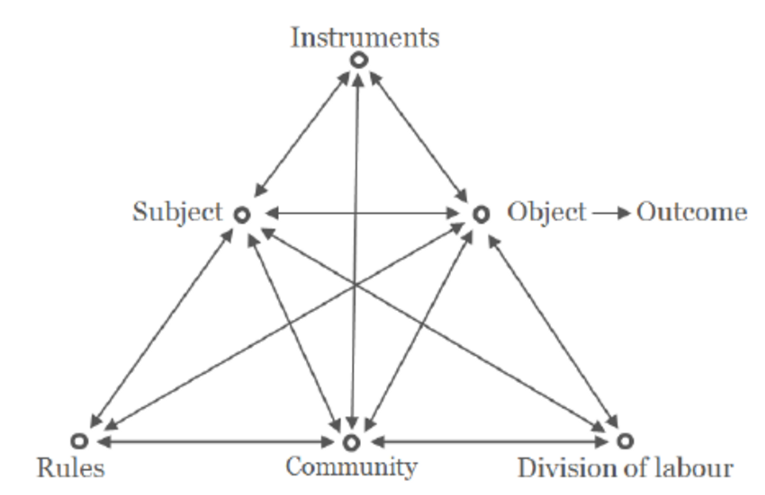User Personas of the Fediverse and Social Media
/2024-09/session/3-d/
Convener: Johannes Ernst, with his Dazzle Labs Inc hat on (@j12t@j12t.social)
Participants who chose to record their names here:
- Anca Mosoiu (@anca@allpeep.social)
- Chris Messina (@chris@threads.net)
- Colin Devroe (@colin@cdevroe.com / @cdevroe@mastodon.social)
- Jesse Karmani (@jesseplusplus@mastodon.social)
- Dr Implausible (@drimplausible@mastodon.online)
- Saskia Welch (@saskia@newsmast.social)
Tags / links to resources / technology discussed, related to this session:
Please fill in this form if this topic is interesting to you and you want to stay in touch: https://dazzlelabs.net/links/fediverse-user-personas
Notes
Discussion started with the need to understand why people use social media and what they aim to achieve.
Johannes is interested in feedback on early draft slides. He presented:
- “Variety Show”: Users seeking entertainment as passive consumers. Here for the content and to be entertained. Interests are important, social graph is not. Rely on algorithm for content. Example: YouTube passive watching.
- “Friends at the pub”: Users catching up, bantering with friends, similar to early Facebook use. Small graph users; Mastodon OGs - don’t want the algorithm, it intrudes.
- “News consumer”: Social media as a newspaper replacement. Users looking for current events, real-time updates, and specific subjects. Social graph useful for reputation/validation, not so much for personal connections. Twitter in its heyday.
- “Advice or help seekers”: Users seeking advice or solutions to problems, from interpersonal (landlord) to money (mutual aid calls) or specific questions. Includes “classifieds use case”.
- “Birds of a feather”: Users connecting over shared passions, causes, or obscure hobbies. Long distance search is important.
- “Brand builders”: Individuals/organizations aiming to build a brand or business. Social graph is important, reaching an audience is important.
- “Trolls”: Users aiming to provoke and engage negatively.
- “Professional networkers”
- “Attention seekers”
- “VRM” use cases
Suggestions for additions:
- “Communication manager”: Users needing to disseminate information, e.g. local government announcements. People that have non-commercial incentives to reach the biggest audience.
- “Small content creators”: Users building their brand through niche communities.
- “Bots” or automated accounts.
- “Knowledge seekers” or researchers.
- “Brand Builders” could be split into large-scale commercial enterprises (e.g. Coca Cola) vs. small-scale publishers (e.g. solo comic book artist publishing on the web).
How do these personas interact? Which are looking for each other?
Georgia: Suggested adding a column about what algorithms need to feed specific user needs, especially for those seeking shared experiences like chronic illness communities.
Dr. Implausible: Mentioned existing literature on social media user psychographics, highlighting the importance of engaging with academic research. A few links that came up with an initial search:
- https://www.emerald.com/insight/content/doi/10.1108/qmr-06-2013-0041/full/html
- https://journals.sagepub.com/doi/abs/10.1177/0270467610380009
- https://www.tandfonline.com/doi/abs/10.1080/0965254X.2015.1095222
- https://cs.furman.edu/~tallen/csc271/source/socialMediaUsers.pdf
- https://www.researchgate.net/publication/211906609_Uses_and_Gratifications_of_Social_Media_A_Comparison_of_Facebook_and_Instant_Messaging
- https://dl.acm.org/doi/10.1145/3265986
- https://www.tandfonline.com/doi/full/10.1080/1369118X.2015.1008542?scroll=top&needAccess=true
Debate on whether a single application can satisfy all personas:
- Bob: Believed a flexible app could serve all needs by presenting data differently to each user.
- Anon: Argued some activities are fundamentally at odds and may require distinct applications.
- Chris: Shared insights on activity streams and how different software could respond to varied user needs.
- Anon: Mentioned Meta and WordPress trying to be “everything apps” but cautioned against the pitfalls of such approaches.
Discussion of Super App:
- https://a16z.com/when-one-app-rules-them-all-the-case-of-wechat-and-mobile-in-china/
- https://hbr.org/2023/04/are-super-apps-coming-to-the-u-s-market
An attendee asked Claude.ai for its input, which produced this list.
Georgia points to related work she’s been doing: spreadsheet.
People use social media for various reasons, including:
- Connection: To maintain and build relationships with friends, family, and like-minded individuals.
- Information: To stay informed about news, trends, and topics of interest.
- Self-expression: To share thoughts, feelings, and creative works with others.
- Validation: To seek approval and support from peers and followers.
- Entertainment: To find amusement, distraction, and enjoy content from others.
- Professional growth: To network, find job opportunities, and showcase skills.
- Community building: To find and engage with groups that share common interests or experiences.
- Activism: To raise awareness about causes and mobilize support for social or political issues.
- Personal branding: To create and maintain a public image or persona.
- Commerce: To promote businesses, products, or services.
In essence, social media serves as a multifaceted platform for human interaction, information exchange, and self-presentation, fulfilling various social, psychological, and practical needs in the digital age.
How these Personae Interact
Consider Engeström’s Triangle:

Next steps and future work:
- Plan to develop the discussion into a blog post or white paper. (Link to stay in touch on this at the top of the page.)
- Intention to attach specific applications and projects to identified personas for practical guidance.
- Emphasis on continuous feedback and iteration based on what we learn as the Fediverse evolves.